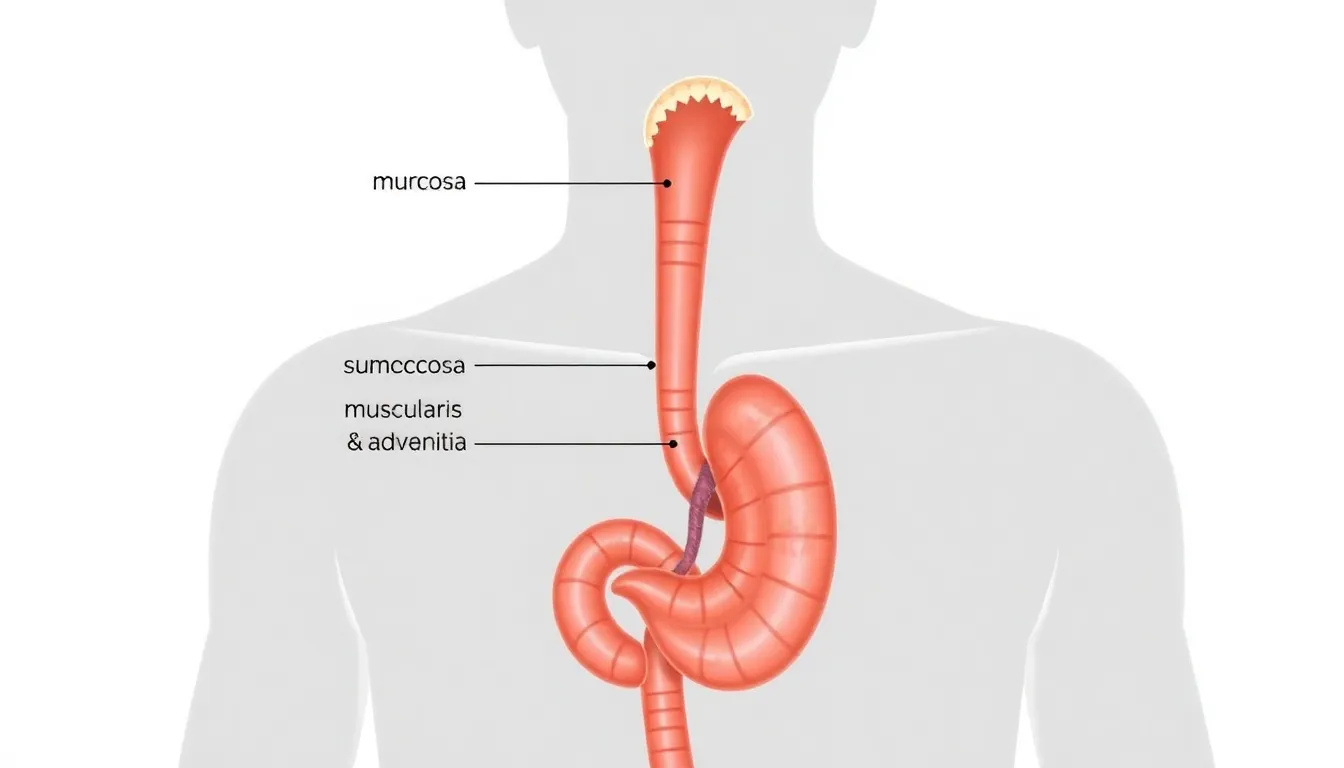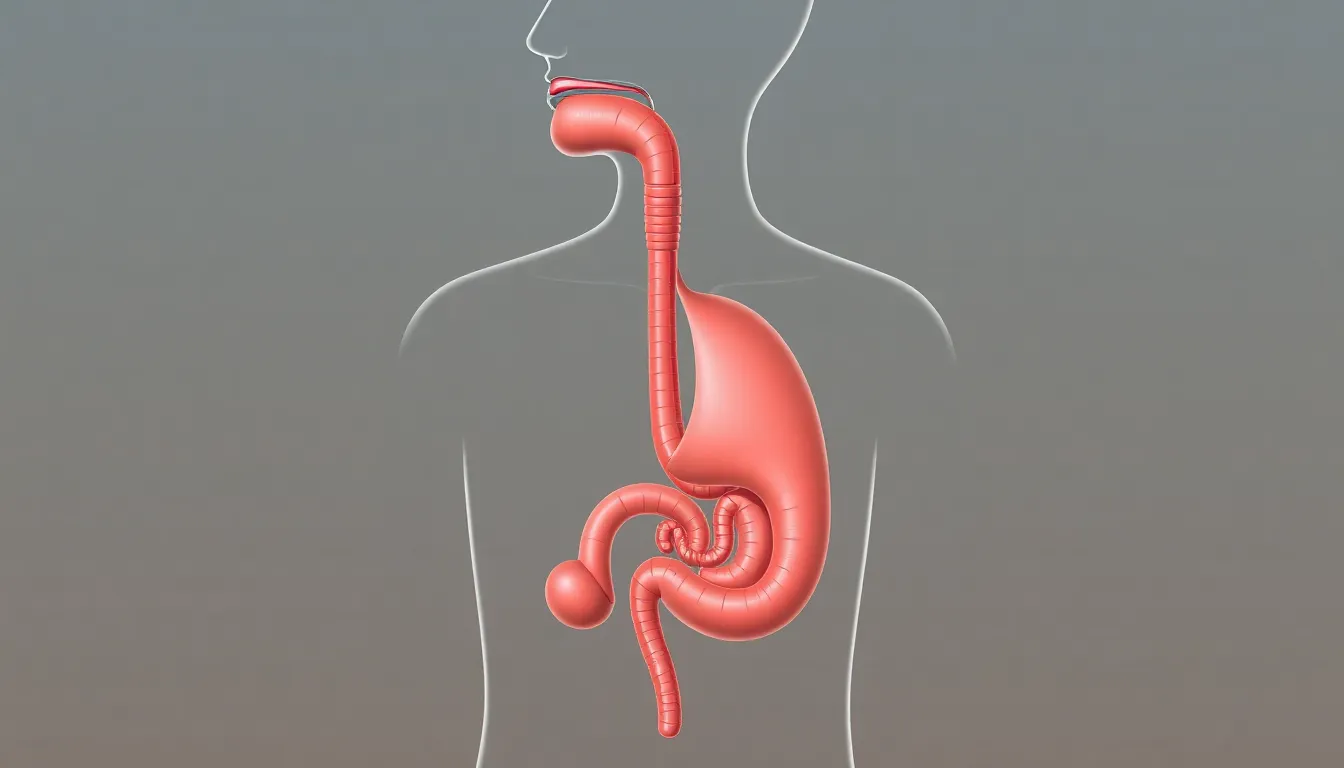Imagine a tube so important it deserves a standing ovation every time you swallow. That’s the esophagus—your very own food highway! This muscular marvel plays a crucial role in the digestive system, transporting delicious bites from the mouth to the stomach faster than you can say “I’ll have another slice of pizza.”
Table of Contents
ToggleOverview of Esophagus Function
The esophagus plays a crucial role in the digestive system. It consists of a muscular tube measuring approximately 10 to 12 inches in length. This tube connects the throat to the stomach, actively facilitating the transportation of food.
During swallowing, the esophagus moves food through a series of coordinated muscle contractions known as peristalsis. These contractions create waves that push the food bolus downward. Each wave ensures food moves efficiently toward the stomach without interruption.
The esophagus also features a lining composed of stratified squamous epithelium for protection. This lining withstands friction from food, ensuring the smooth passage of different food types, from solids to liquids. Furthermore, the esophagus includes two critical sphincters: the upper and lower esophageal sphincters. These sphincters help regulate the entry and exit points of food, maintaining proper function and preventing reflux.
In addition, the esophagus contains glands that produce mucus. This mucus lubricates the esophageal walls and eases food movement. Increased mucus production occurs during swallowing, facilitating a seamless process.
Understanding the esophagus’s function highlights its significance in digestion. This muscular tube not only transports food but also protects and prepares it for digestion in the stomach. Without its effective operation, the digestive process can become compromised.
Anatomy of the Esophagus

The esophagus features a complex structure that plays a pivotal role in digestion. Its anatomy comprises several layers that work together to facilitate food transport.
Structure and Layers
The esophagus consists of four main layers: mucosa, submucosa, muscularis, and adventitia. Mucosa, the innermost layer, is lined with stratified squamous epithelium, providing protection against mechanical abrasion. The submucosa contains connective tissue, blood vessels, and nerves, offering support and nourishment. Muscularis consists of two muscle layers, an inner circular layer and an outer longitudinal layer, which allow for coordinated movements through peristalsis. Adventitia, the outermost layer, anchors the esophagus to surrounding structures.
Location in the Digestive System
The esophagus serves as a crucial link between the throat and the stomach. Usually, it extends approximately 10 to 12 inches long, situated behind the trachea and heart, and in front of the spine. Positioned between the pharynx and the stomach, the esophagus passes through the diaphragm before entering the abdominal cavity. This anatomical placement ensures efficient transport of food, maintaining its function within the digestive system.
Role of Esophagus in Digestion
The esophagus plays an essential role in digesting food by efficiently transporting it to the stomach. This muscular tube facilitates the passage of food through a series of coordinated contractions known as peristalsis.
Transporting Food to the Stomach
Transporting food to the stomach occurs through rhythmic muscle contractions. When food enters the esophagus, the muscular walls constrict in a wave-like motion, pushing the food bolus downwards. This process ensures food moves smoothly to the stomach without delays or blockages. The upper esophageal sphincter relaxes to allow food entry while the lower esophageal sphincter closes to prevent reflux. The mucus secreted by esophageal glands coats the walls, minimizing friction and easing the transit of food.
Coordinating with Other Digestive Organs
Coordinating with other digestive organs enhances the efficiency of digestion. The esophagus connects directly with the stomach while communicating with structures like the mouth and pharynx. As the bolus moves downward, signals from the brain and surrounding nerves ensure that the timing of peristalsis matches other digestive processes. The lower esophageal sphincter also plays a vital role by preventing stomach contents from flowing back into the esophagus. This collaboration between the esophagus and neighboring organs maintains a smooth digestion process, allowing food to be processed effectively.
Common Disorders Affecting the Esophagus
Diet, lifestyle, and genetics contribute to various esophageal disorders. Gastroesophageal reflux disease (GERD) occurs when stomach acid frequently flows back into the esophagus, leading to irritation and discomfort. Symptoms often include heartburn, regurgitation, and difficulty swallowing.
Eosinophilic esophagitis is an inflammatory condition where eosinophils accumulate in the esophagus, triggered by allergens or food. People usually experience swallowing difficulties, food getting stuck, and chest pain.
Achalasia affects the lower esophageal sphincter, impairing its ability to relax during swallowing. Patients often report symptoms such as regurgitation of undigested food, chest pain, and weight loss due to difficulty swallowing.
Esophageal cancer represents a serious disorder impacting the esophagus. Risk factors include long-term GERD, smoking, and heavy alcohol consumption. Common signs consist of difficulty swallowing, unintentional weight loss, and persistent chest pain.
Barrett’s esophagus occurs when the lining of the esophagus changes in response to long-term acid exposure from GERD. This change increases the risk of developing esophageal cancer. Regular monitoring is necessary for individuals diagnosed with Barrett’s esophagus to catch any precancerous changes early.
Esophagitis encompasses inflammation of the esophagus, arising from infections, irritants, or allergies. Symptoms include pain during swallowing, chest pain, and heartburn.
Understanding these conditions helps individuals recognize symptoms and seek timely medical attention. Early diagnosis often leads to better outcomes, mitigating complications associated with these disorders.
The esophagus is more than just a passageway; it’s a crucial player in the digestive process. Its intricate structure and coordinated muscle contractions ensure that food moves smoothly from the mouth to the stomach. By understanding its function and recognizing potential disorders, individuals can better appreciate the importance of maintaining esophageal health. Awareness of conditions like GERD and others can lead to timely interventions, ultimately enhancing overall digestive well-being. The esophagus truly deserves recognition for its vital role in the body’s digestive system.




